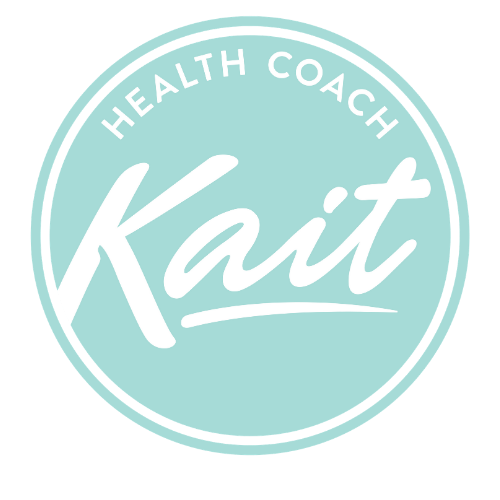Easy Ways to Boost Protein at Every Meal (Without Overhauling Your Diet)
Why You Need More Protein Than You Think
If you’re trying to balance your blood sugar, manage cravings, reverse insulin resistance, or support fat loss—getting enough protein is one of the most effective things you can do.
But here’s the reality: most people are still falling short. Especially women.
Even if you think you eat healthy, chances are your meals aren’t hitting that magic number: 30 grams of protein per meal.
In this post, I’m sharing practical, no-nonsense hacks to boost protein at every meal—without making your meals boring or restrictive. These simple strategies will help you feel full longer, support lean muscle, stabilize blood sugar, and make healthy eating feel a whole lot easier.
I’m Kait—a nutritionist who specializes in blood sugar, insulin resistance, and metabolism. Let’s break it down meal by meal.
Why Protein Matters (and Where People Go Wrong)
✔ Most people eat too little protein—especially at breakfast.
✔ Low protein leads to blood sugar crashes, cravings, and fatigue.
✔ 30 grams of protein per meal is ideal for appetite control, energy, and metabolic health.
But many people assume hitting that number means eating giant portions of meat—which isn’t realistic (or appetizing) for everyone.
That’s why these small add-ons and easy swaps are game changers.
Breakfast Hacks
Breakfast is usually the lowest protein meal of the day—and often the most carb-heavy. But a few small additions can completely change that.
1. Add Cottage Cheese to Scrambled Eggs or Omelettes
Cottage cheese has about 12–15g of protein per ½ cup, and it blends perfectly into eggs. It adds creaminess, volume, and a protein boost without changing the flavor too much. Try it in an omelette with spinach, or stir it into scrambled eggs before cooking.
2. Mix Greek Yogurt into Smoothies or Make a Yogurt Bowl
Greek yogurt is one of the easiest protein-boosting ingredients. One cup has 20–25g of protein depending on the brand. Add a scoop of collagen or protein powder to hit 30g easily. Bonus: use Greek yogurt as a base for sauces or dressings—great for savory breakfasts or brunches.
3. Don’t Forget About Eggs—But Eat Enough!
Two eggs only give you 12–14g of protein, so you need at least 3–4 eggs, or pair them with another protein source. Add smoked salmon, leftover chicken, or even a sausage patty to hit your 30g goal.
4. Use High-Quality Protein Powder If You’re Short on Time
If you can’t make a full breakfast, a clean protein powder shake is your best friend. Look for one with 25g+ per serving, and mix with water, milk, or blend into a smoothie. Drink it right after your meal if you fall short on protein.
Lunch + Dinner Hacks
These meals are usually easier to get protein in—but it still helps to be intentional.
1. Build Your Meal Around Animal Protein
Start with 4–6 ounces of meat, poultry, or seafood—this gets you 25–35g of protein easily. Think chicken thigh salads, grilled steak and veg, or salmon and sweet potato.
2. Add Hard-Boiled Eggs or Canned Fish to Salads
One hard-boiled egg = about 6g of protein. Add 2–3 to your salad, or top with a can of tuna or salmon for 20–25g. It’s an easy, prep-friendly way to hit your target.
3. Make Sauces with Greek Yogurt or Ricotta
Blend Greek yogurt with herbs, lemon, and garlic for a creamy dressing. Or use ricotta or cottage cheese as a base for pasta sauces, dips, or bowls. These small additions can add 10–15g of protein without making your meal feel heavy.
Meal Building Strategy
Start With Protein
Make protein the centerpiece of your plate—not a side. This ensures you hit at least 30g at each meal, which supports blood sugar balance, fat burning, and lean muscle maintenance.
Don’t Fear Fat
Fat helps you stay full, supports hormone health, and slows the digestion of carbs. Use olive oil, avocado, butter, or eat the fat on your meat—it’s not the enemy.
Be Smart About Carbs
Choose fiber-rich carbs like root veggies, squash, berries, or whole grains. Eat carbs after protein and fat to minimize glucose spikes.
Thanks for reading—let me know in the comments which protein hack you’re going to try first!
